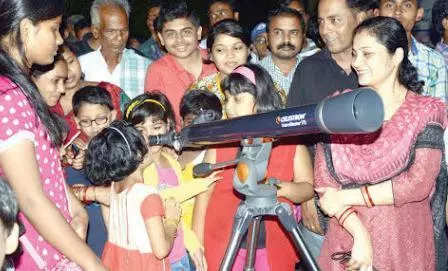Get ready to witness ‘planet parade’ in the evening sky

Bhubaneswar: It’s a ‘celestial parade’ in the sky a couple of days later and in Feb and experts said students and star gazers shouldn’t miss the opportunity to view four planets without optical aid.
Subhendu Patnaik, former deputy director of Pathani Samanta Planetarium here, said six planets are now aligned in the sky. “On Jan 17 and 18, people can view the planets align using a telescope. However, they can see four of them with their eyes after sunset,” he added.
“Due to the different speeds of revolution around the Sun, some planets are visible in the sky at the same time. This is called a planetary parade. As the night progresses, these planets will move from east to west and set on the western horizon sequentially. The most attractive sight will be the conjunction of Venus and Saturn on Jan 18. At present, Saturn is visible a little above Venus, and in the next few days, the distance between the two planets will decrease. Venus will be visible in the western sky, slightly above it, the pale yellow Saturn, and Mars in the eastern sky, with bright Jupiter slightly above it near the zenith,” said Patnaik.
On the evening of Jan 18, Venus will be seen very close to Saturn for about two hours. “During the preceding days, Saturn will move lower and farther away from Venus. Uranus and Neptune will also be present in the night sky during the same time; however, they can be seen only through telescope,” he added.
He advised students not to miss such an opportunity. “This beautiful cosmic event can be seen with our eyes across the country and in Odisha,” he added.
Kapil Jain, project coordinator at the Regional Science Centre here said they will organise the viewing of the celestial spectacle on the evenings of Jan 17 and 18.
Asmi Nandy, a member of NISER astronomy club, said on Jan 25, sky watchers can see Venus, Mars, Jupiter and Saturn with their eyes. “To see the other planets, binoculars or a telescope would be more suitable,” she added.
There is a possibility that seven planets will align in the sky on Feb 28, which happens after several years or even decades.
Subhendu Patnaik, former deputy director of Pathani Samanta Planetarium here, said six planets are now aligned in the sky. “On Jan 17 and 18, people can view the planets align using a telescope. However, they can see four of them with their eyes after sunset,” he added.
“Due to the different speeds of revolution around the Sun, some planets are visible in the sky at the same time. This is called a planetary parade. As the night progresses, these planets will move from east to west and set on the western horizon sequentially. The most attractive sight will be the conjunction of Venus and Saturn on Jan 18. At present, Saturn is visible a little above Venus, and in the next few days, the distance between the two planets will decrease. Venus will be visible in the western sky, slightly above it, the pale yellow Saturn, and Mars in the eastern sky, with bright Jupiter slightly above it near the zenith,” said Patnaik.
On the evening of Jan 18, Venus will be seen very close to Saturn for about two hours. “During the preceding days, Saturn will move lower and farther away from Venus. Uranus and Neptune will also be present in the night sky during the same time; however, they can be seen only through telescope,” he added.
He advised students not to miss such an opportunity. “This beautiful cosmic event can be seen with our eyes across the country and in Odisha,” he added.
Kapil Jain, project coordinator at the Regional Science Centre here said they will organise the viewing of the celestial spectacle on the evenings of Jan 17 and 18.
Asmi Nandy, a member of NISER astronomy club, said on Jan 25, sky watchers can see Venus, Mars, Jupiter and Saturn with their eyes. “To see the other planets, binoculars or a telescope would be more suitable,” she added.
There is a possibility that seven planets will align in the sky on Feb 28, which happens after several years or even decades.















